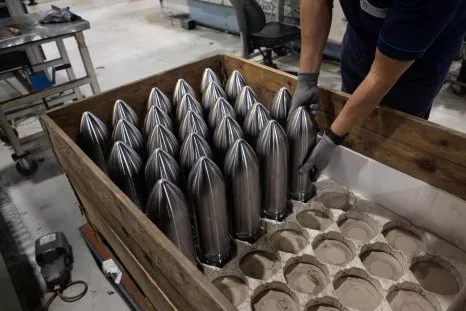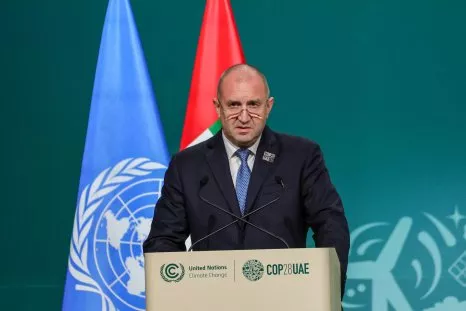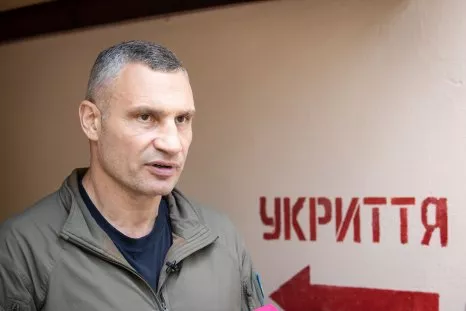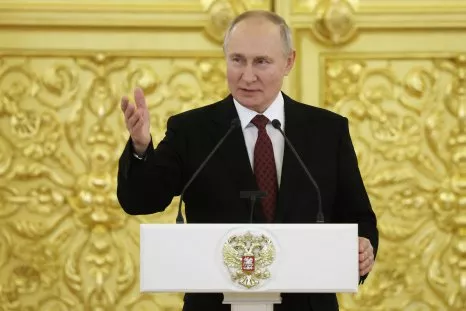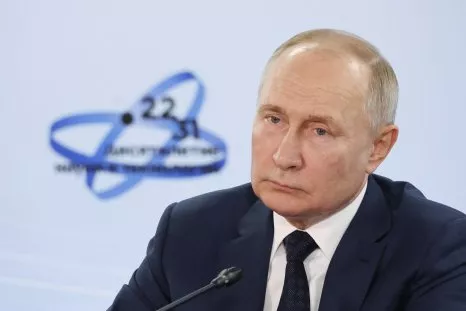Russian Arms Firms Are Hemorrhaging Cash
Russia's weapon-producing giants appear to be struggling under the pressure of the Kremlin's disastrous war on Ukraine, according to new data published Monday by the Stockholm International Peace Research Institute (SIPRI) arms trade watchdog.
The combined revenue of the two Russian companies—Rostec and the United Shipbuilding Corporation (USC)—included in SIPRI's annual ranking of the top 100 arms-producing companies worldwide fell by 12 percent in 2022, amid the pressures of the war on Ukraine, related international sanctions, and subsequent economic strains.
The 12 percent drop in revenue was worse than in any other major nation, SIPRI's data showed, even as Russia's friends and rivals alike also grappled with production bottlenecks and inflation.
A collapse in exports appears to have been particularly punishing for Russian firms. Between January and November 2022, Russian arms exports were worth some $8 billion, significantly less than the $15.8 billion registered in 2021.
"In 2022, Russian companies continued to be affected by a decline in arms exports," SIPRI said. "While they have been feeling the consequences of this trend for some time, the impact appeared to be much stronger in 2022 than previously."
Nan Tian, a senior researcher at SIPRI, told Newsweek there are "a lot of intricacies" to consider when evaluating the Russian figures.
"The decline in arms revenue in 2022 is not necessarily an indication that the industry is in big trouble," Tian said, but added that the combination of falling revenue and the collapse of Russia's traditionally strong foreign arms exports does pose a long-term problem.
"Exports have essentially fallen off a cliff in the last two years," he said. "That's already one big part of the revenue stream that no longer has access to. And even when the war ends, we're not sure whether it would get that market back."
"Having seen how poorly some of these Russian-made weapons have performed, countries might be a lot more hesitant to buy Russian weapons."
Only Rostec and USC were included in the 2022 figures, with SIPRI blaming a lack of data and a continued decline in Russian corporate transparency. Rostec is a state-owned holding company that controls a range of arms-producing firms, but has no direct manufacturing capacity of its own. "It has been included in the 2022 ranking due to the lack of data for almost all other Russian arms companies," the SIPRI report said.
Among the military manufacturers controlled by Rostec are High Precision Systems, KRET, Russian Electronics, Russian Helicopters, United Aircraft Corporation, United Engines Corporation and UralVagonZavod.
Rostec was ranked 10th on SIPRI's top 100 list, taking in $16.8 billion in arms revenue. This represents a 9.9 percent drop in revenue versus 2021, "mainly due to high levels of inflation in Russia," SIPRI wrote, noting that the corporation's "arms revenue actually increased in nominal terms."
The state-owned USC is comprised of some 40 shipbuilding companies spread across Russia, building around 80 percent of all vessels in the nation. It was ranked 36th in SIPRI's top 100 list, following an 18 percent revenue drop to around $4 billion.
"Arms revenue as a percentage of total revenue remained stable for both companies in 2022, at 55 percent for Rostec and at 79 percent for USC," the report said. Taken together, SIPRI added, the 2022 footprint of the two companies gives "an approximate indication of the size of Russia's arms industry in 2022."
Newsweek has contacted Rostec and USC by email to request comment.
Neither Almaz-Antey (with a 2020 arms revenue of $7.6 billion) nor Tactical Missiles Corporation (with a 2021 arms revenue of $4.8 billion) were included in the latest SIPRI rankings "due to diminishing transparency," the report said.
Neither is part of Rostec and both produce equipment in high demand in the war on Ukraine, including air defense systems and missiles. Their exclusion from the data means Russia's collective arms revenue figure appears diminished.
"The picture could be quite different if those two were included," Tian said, noting that in previous years Almaz-Antey was the country's highest revenue firm.
Western sanctions are one of the other factors contributing to Russia's contracting arms export revenue figures. USC, for example, reported late delivery of military vessels due to limited access to components, SIPRI noted.
Inflation has been a global problem since the COVID-19 pandemic upended established supply chains and prompted huge increases in government spending. Rising prices were further spurred by Russia's invasion of Ukraine from February 2022, both Kyiv and Moscow also grappling with currency volatility and inflation.
Indeed, the only Ukrainian firm listed in SIPRI's top 100 companies worldwide—the state-owned UkrOboronProm—posted a 2022 real-term fall of 10 percent in revenue to a total of some $1.3 billion. "Although its arms revenue increased in nominal terms, this was more than offset by the country's high inflation," SIPRI wrote.
The official Russian inflation rate passed 7 percent in November, with the country's central bank already embarked on a campaign of successive interest rate hikes in a bid to curb rising prices and bolster the ruble.
SIPRI noted that rising prices might go some way to explaining the discrepancy between Russia's record-breaking military budget and the sluggish revenues of its major arms producers.
Other factors, the report said, are that "government payments to arms companies may have been delayed and mitigated by bank loans. Second, companies may have reported work to refurbish arms from Soviet-era stockpiles as new production. Such work would not bring in as much revenue as actual new production."
"The numbers itself might not indicate that the industry is in a crisis," Tian said, especially if new weapons procurement deals are being made by the Kremlin as part of its spirally debt burden being driven by its war on Ukraine. "They're still producing, it's just that they might not have been paid yet," Tian said of the firms responsible for providing Moscow's battlefield equipment.
The disaster scenario of collapsing arms producers is not likely, Tian added. "The chances are the government would step in if it got to the extreme where they're about to collapse," he explained.
Disclaimer: The copyright of this article belongs to the original author. Reposting this article is solely for the purpose of information dissemination and does not constitute any investment advice. If there is any infringement, please contact us immediately. We will make corrections or deletions as necessary. Thank you.
